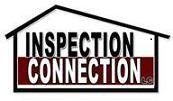Heating and cooling: Size it right
Several factors to consider when selecting the perfect HVAC
The most important determining factor in how well your heating and cooling system works and how much you pay to operate it is the quality of the installation. The rated “efficiency” of any specific piece of heating or cooling equipment is based on the assumption that it is installed per the manufacturer’s guidelines. Just because you spring for the more expensive, 16 seasonal energy efficiency rated (SEER) air conditioner system does not mean your cooling bills will be any lower than your neighbor’s correctly installed 13 SEER unit. Duct location, layout design and leak prevention along with correct sizing of heating and cooling equipment are the first key steps in getting any type of heating, ventilation and air conditioning (HVAC) equipment to perform at the manufacturer’s published rate of efficiency. We have discussed how air duct installation problems impact comfort and efficiency in previous articles. Ductwork is the arterial system for the HVAC system – if there are leaks or if ducts are too small, adequate airflow cannot be delivered. If ductwork is too large for the rated airflows, you can have nicely conditioned ductwork but no flow to the living spaces in the home. These ducting issues are easy to visualize and to understand. Correctly sizing HVAC equipment, especially for ducted refrigerated air conditioning systems, can require a little more background information to get our arms around. Th e size or cooling capacity of a refrigerated air conditioning unit is typically described in “tons.” This term comes from the days when most mechanical refrigeration systems were used only to make ice. Down at the ice plant, they figured out that it took 12,000 British thermal units (BTU) of measured energy to convert 2,000 pounds of water to ice. The 12,000 BTU equivalent to 1 ton of cooling capacity measure is still used today to state sizing of residential refrigerated air conditioning systems. A typical 4-ton capacity system can also be described as 48,000 BTUs. When someone asks my dad what size boots he wears, he says, “My feet measure size 10, but the 11s felt so good I bought the 12s!” Just like boots, bigger air conditioning equipment isn’t always better and too small is always bad. The key is in the measurement step. Every home has a different requirement for the amount of cooling and heating needed to keep the people in it comfortable. An engineering process described as a Manual J load calculation measures how much heat loss (winter) and heat gain (summer) a home gives up during the most extreme yearly temperatures – summer days and winter nights. Many variables change the heating and cooling load for a specific home – climate zone, elevation, conditioned area within the home envelope, window size, type, shading and orientation, amount and types of insulation and the leakiness of the home and ductwork (how much air gets in from outside). If this sounds a little complex, well, it is. Since this planning step can be cumbersome, it is often completed with shortcuts or not at all. The shortcut amounts to a guesstimate. For most HVAC installers who don’t complete the Manual J calculation, the magic number is 400 to 500 square feet of living space per ton of cooling. To their credit, this number was pretty accurate for most homes – built before 1980. Modern homes have dual-pane, gas filled windows, better insulation and overall more airtight construction. Accurately completed Manual J load calculations reveal that most new homes only need around 600 to 800 square feet per ton of cooling equipment capacity. New homes with thermally efficient wall and insulation systems, such as structural insulated panels, advanced wood-framed walls with spray foam and insulated concrete forms, often require only 1,000 to 1,500 square feet per ton. Undersized equipment simply will not keep you comfortable. Oversized equipment will also leave you uncomfortable due to the frequent starts and stops of the system.
Oversized equipment means:
A clammy house because the equipment doesn’t run long enough to dehumidify the air
Shorter lifetime for the system because it turns on and off frequently (also called short cycling). Since it’s so big, it doesn’t take long to cool off the house.
More expensive to install. Bigger capacity units cost more.
The mpg sticker on your car stipulates you will only achieve the rated fuel efficiency when you run on level highway between 55 and 65 miles per hour. Your air conditioning system is similar. If equipment capacity is far higher than the required heat gain load of the home, the AC will kick on and quickly satisfy the set point. This pattern will repeat and is the equivalent of city stop and go driving on car fuel efficiency. Accurately sized HVAC systems have longer steady state run times but fewer costly starts and stops. If you are buying a new home or if you are upgrading heating and cooling systems in the home you own now, try to get the most efficient system you can afford. First, talk to your HVAC contractor about right-sizing the system. Ask to see how they calculate cooling and heating equipment size. Ask if they do duct testing and blower door testing to confirm infiltration rates. Ask about post-installation utility costs for systems that they have recently put in. If your HVAC company can’t answer these basic questions, call the next guy.
Miles Dyson is the owner of Inspection Connection LC - Professional Home Energy Rating and Home Inspection Services. For more information visit: https://www.InspectionConnectionTexas.com.
Las Cruces Bulletin Friday, July 12, 2013
